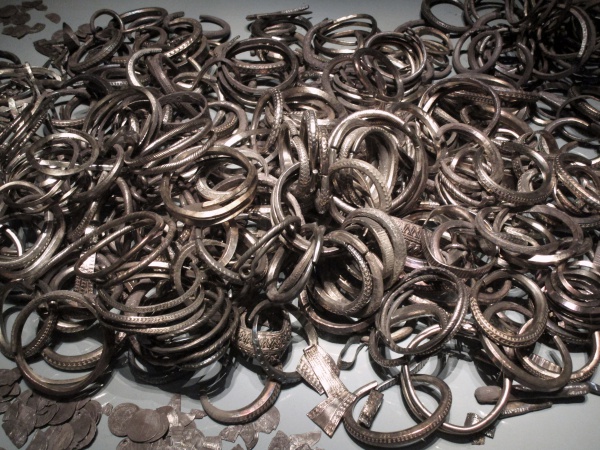Facts About Spillings Hoard
The Spillings Hoard, the world's largest Viking silver treasure, was unearthed on July 16, 1999, in a field at Spilling farm in northern Gotland, Sweden. This extraordinary find, weighing a total of 67 kg, included 14,295 coins—predominantly Islamic—and a significant collection of bronze scrap metal. Remarkably, the treasures were concealed under the floorboards of a Viking outhouse dating back to the 9th century.
The discovery was made by archaeologist Jonas Ström and numismatist Kenneth Jonsson, who were in the area filming a cultural feature. News of the find spread rapidly, drawing thousands of curious visitors. Subsequent excavations revealed remnants of a building where the treasures were likely stored in chests.
The silver was found in sacks or chests, while the bronze deposit included items such as necklaces, bangles, and pins, possibly intended for crafting new artifacts. The hoard also contained a significant amount of silver jewelry and coins from various regions, some of which had unique inscriptions.
Experts have dated the hoard to have been hidden sometime after 870-71. Today, it is proudly displayed at the Gotland Museum. This find is extraordinarily large, especially considering that over 700 caches of silver have been discovered on Gotland between the 9th and 12th centuries. Alongside the silver and bronze, the hoard also contained items such as clothes pins, glass beads, and iron nails.
The Spillings Hoard offers invaluable insights into Viking Age trade and craftsmanship. Ongoing research continues to reveal its historical significance, highlighting a remarkable aspect of Viking culture and emphasizing Gotland's rich history as a bustling hub for trade and commerce during that era.

 Norway
Norway